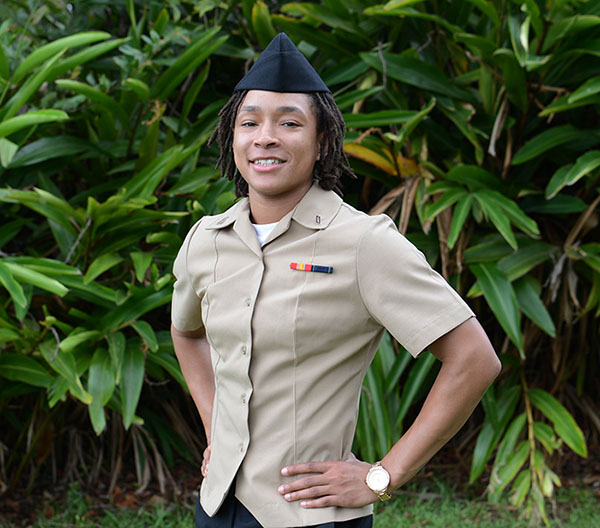Most Americans would agree that communications are a vital part of their lives. The same is true for the U.S. Navy. Instead of using smart phones and tablets, a group of sailors stationed in Pearl Harbor, Hawaii, use the most-advanced satellite and telecommunications equipment to share vital information with sailors deployed around the world.
Seaman Ronisha St. Felix, a 2017 Palm Beach Lakes High School graduate and native of Wellington, is one of these sailors assigned to Naval Computer and Telecommunications Area Master Station Pacific who provides these communication services.
St. Felix credits success in the Navy to many of the lessons learned in Wellington. “My hometown taught me to give it your all at the task at hand,” St. Felix said.
As a Navy information systems technician, St. Felix is responsible for providing support to the command by setting up and assisting with video teleconferences.
NCTAMS Pacific is the center of communications for the U.S. Navy in the Pacific, providing command, control, communications, computers and intelligence connectivity to naval and joint forces from San Diego to Singapore and beyond. NCTAMS Pacific is the largest naval communications station in the world, known as the “Pacific Voice of Command.”
A key element of the Navy the nation needs is tied to the fact that America is a maritime nation, and that the nation’s prosperity is tied to the ability to operate freely on the world’s oceans. More than 70 percent of the Earth’s surface is covered by water, 80 percent of the world’s population lives close to a coast and 90 percent of all global trade by volume travels by sea.
The U.S. Pacific Fleet is the world’s largest fleet command, encompassing 100 million square miles, nearly half the Earth’s surface, from Antarctica to the Arctic Circle and from the West Coast of the United States into the Indian Ocean.
Being stationed in Pearl Harbor, often referred to as the gateway to the Pacific in defense circles, means that St. Felix is serving in a part of the world that is taking on new importance in America’s focus on rebuilding military readiness, strengthening alliances and reforming business practices in support of the National Defense Strategy.
The Navy has been pivotal in helping maintain peace and stability in the Pacific region for decades. The Pacific is home to more than 50 percent of the world’s population, several of the world’s largest militaries and many U.S. allies.
Though there are many ways for sailors to earn distinction in their command, community and career, St. Felix is most proud of her recent graduation from Navy boot camp.
“In order to complete our requirements, it was critical that we worked together,” she said. “Teamwork makes the dream work.”
Serving in the Navy is a continuing tradition of military service for St. Felix, who has military ties with family members who have previously served. St. Felix is honored to carry on that family tradition. “My aunt served in the Navy and let me know the importance of applying myself physically and mentally,” St. Felix said.
As a member of one of the U.S. Navy’s most relied upon assets, St. Felix and other sailors know they are part of a legacy that will last beyond their lifetimes, one that will provide a critical component of the Navy the nation needs.
“My command location is beautiful — aloha!” St. Felix added. “My experience in the Navy has shown me that I am a leader and need to lead by example.”








